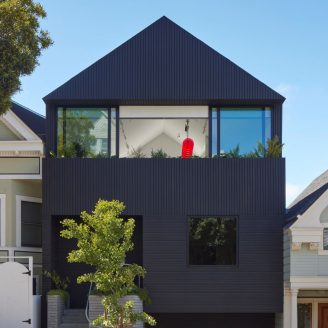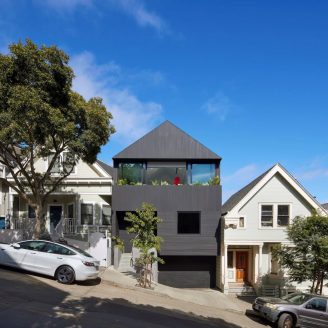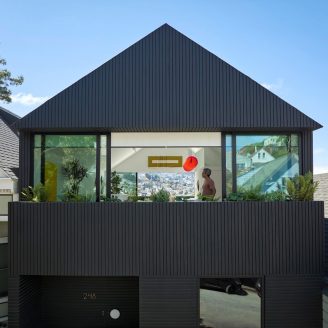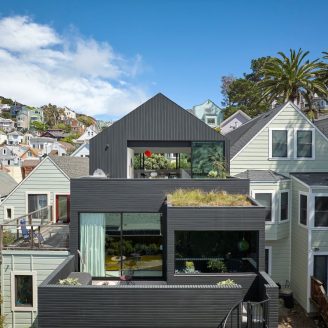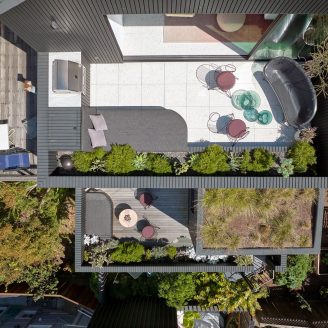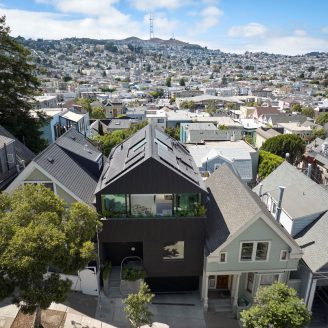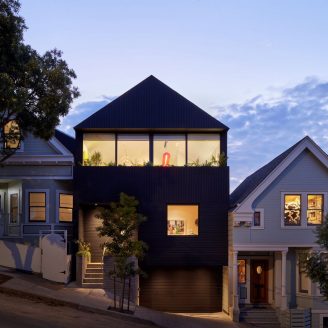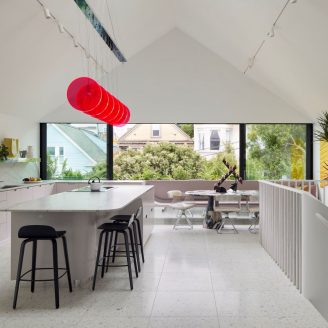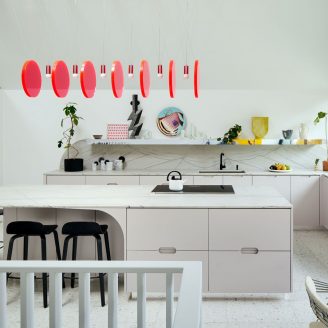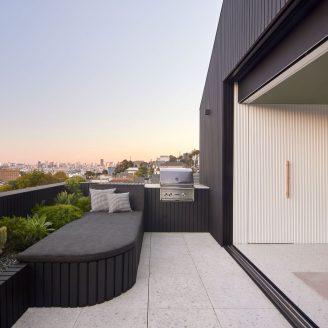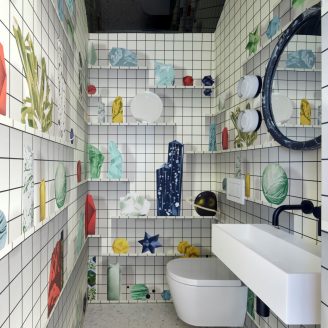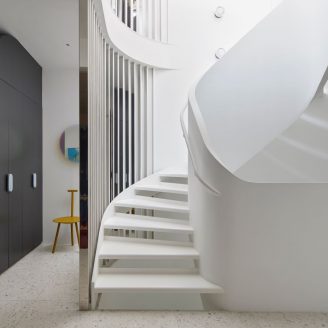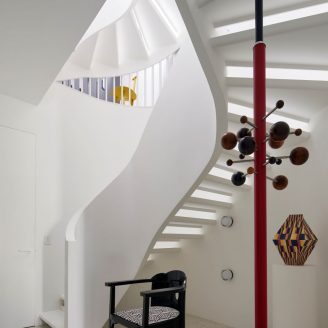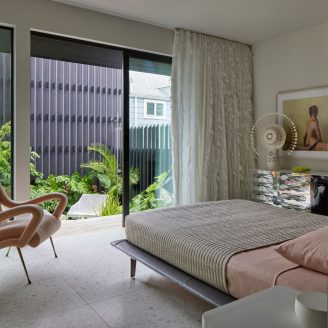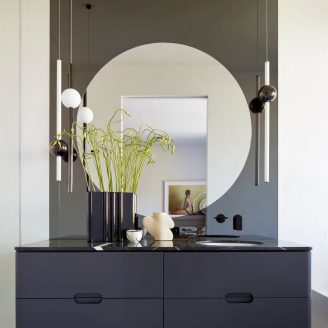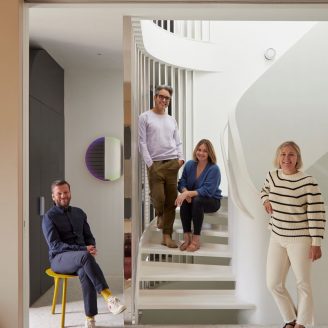Born from the collaboration and friendship between Mork-Ulnes Architects and the owners, who worked together with architectural photographer Bruce Damonte and interior designer Alison Damonte, the three-story Silver Lining House has been designed in the Bernal Heights neighborhood in San Francisco to serve as a showcase for the remarkable furniture and art collection of its occupants, as well as a laboratory for their work.
The original 1908 wood house, built for a roofer and his family of five, had a single-story with a low-pitched roof, and stood out among more traditional two-story gabled rooflines flanking the steep San Francisco street. Mork-Ulnes proposed a new structure with the proportions, scale, and exterior massing that took cues from the gabled Edwardian neighbors. The exterior cedar cladding echoes the local vernacular, in particular the horizontally paneled siding of the neighboring homes. So, the previous small and purple Victorian house was replaced with a modern house that harmoniously blends with its San Francisco streetscape.
The new house shares a similar silhouette with its gabled neighbors that line the steep streets and reinterprets Victorian design elements into modern features: while replicating the roof forms, entry portal/ stoop, and massing of the Victorian homes, the new house also breaks from tradition with a black-painted facade and ribbon windows that visually connect the interior of the house to the neighborhood. The volume of the home is thoroughly modern; abstracted and simplified, it is a large geometric object giving a hint to the architectural language and collection of objects inside.
The house also includes a disco-inspired music parlor, a photography studio, and a penthouse great room which opens to views of both a San Francisco panorama and its Victorian neighborhood. A central curved and sculpted staircase allows light from the third floor skylight to funnel and refract down to the ground floor with half-polished chrome slats bouncing mirrored reflections around the stairwell — a request of Alison, to mimic the experience of walking through a disco ball.
Ribbed textures are repeated throughout the project intambour clad pods, mirror slats, and custom resin tiles. Mirror is used in playful elements like a black disco ball, but also for spatial and light-generating effects with the stair slatting, underneath kitchen cabinets which appear to float, on a ceiling in a powder room, and over a tambour clad pod in the great room.
The interior architecture is also based on objects. Mork-Ulnes set the formal and volumetric stage with an organization of simplified objects, allowing Alison Damonte to outfit them with materials and finishes in line with her vision for the interior. The owners opted for a flipped floor plan with the lowest level providing privacy for a primary suite and small, sunken garden; the second level containing the entry, guest room and more intimate rooms for entertaining and leisure; and the new third story penthouse living space and kitchen offering the most transparency with both distant views of Noe Valley and Twin Peaks and closer views of the neighboring houses and Bernal Hill.
Offering a compelling counterpoint to the restraint and rigor of the architecture, each room in the home offers a tactile, vibrant experience of color, furnishings and art. Objects clad in textures, patterns and materiality reflect the owners’ collective creative spirit. The finishes and furnishings are quirky, tactile, and colorful complementing the owners’ collection of emerging and established artists and Art Deco, Mid-Century Italian, Scandinavian, Post-Modern and Contemporary furniture.
Finally, the house is built with sustainability in mind, with over 65% of the original vertical wall structure preserved and re-used. It has operable glazed walls on the upper floor to allow complete cross-ventilation, and the central stair void acts as a chimney circulating air through the whole building. Operable exterior solar shading provides respite from the home’s sunny southern exposure. The house features solar panels covering the roof that provide electric energy to the house, supply a power wall battery with energy to use during peak surge hours and feed power back to the grid when not in use. The project also has high-performance energy-efficient windows and low-energy emitting appliances.


